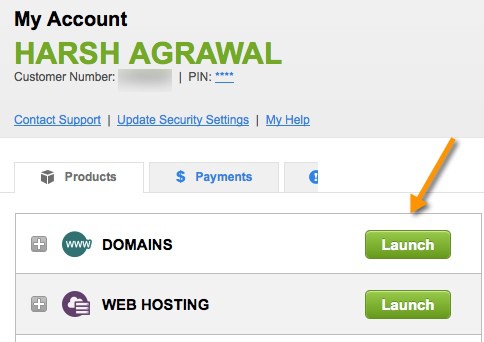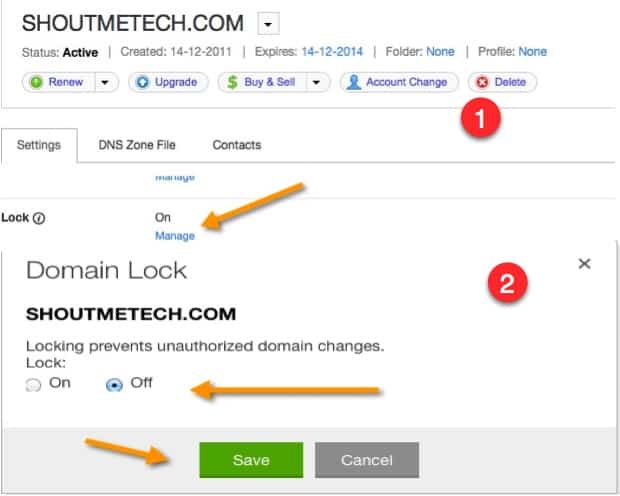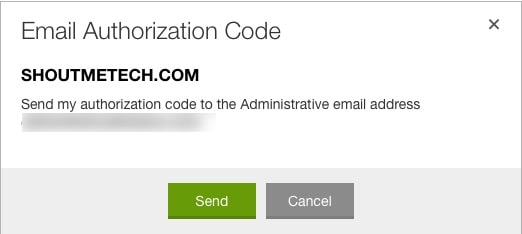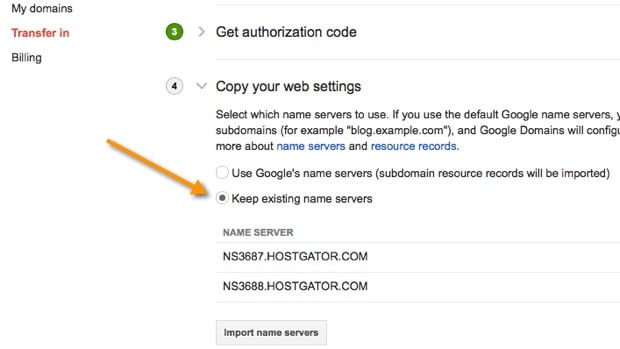apache must use thread safe
download 5.6 x64 thread safe zip
extract zip
1) php.ini need old 5.5
2) folder session_cache need to copy from old 5.5
Done.
Thursday, November 15, 2018
Tuesday, November 6, 2018
How To Transfer Domain From GoDaddy To Google Domains
Namecheap which is certainly one of the closest competitors to GoDaddy, but it will take years of experience for them to match Godaddy standard. If you have been following domain industry news, you must have heard of Google launching their domain service with the name Google domains which are in beta stage & available in U.S.A only.
Today, I got an invitation to try out Google domains, and instead of buying a new domain from them, I thought of transferring and renewing one of my domain hosted on GoDaddy to Google domains.
This guide is for those who are already on Google domains, or you can refer to this once you Google domains goes public. I will show you how to transfer your existing domains on Godaddy to Google domains.
Step by step guide to transfer GoDaddy domain to Google
There are two mandatory steps required to transfer a domain from any domain registrar to new one, and they are:
- Unlock the domain
- Get the EPP code
In this guide, I will show you all the steps you need to do at Godaddy domain managerto unlock and get your domain EPP code to transfer the domain. On the receiving side, I have Google domains, but you can use the same steps for any other domain registrar like NameCheap.
To start with, login to your GoDaddy panel and launch the domain manager at the dashboard:

On the domain manager panel of GoDaddy, you need to click on the domain name which you wish to transfer to Google domains or any other domain registrar.

Now you will be on the domain management page of your selected domain. Here you need to unlock the domain so that your domain can be transferred from one registrar to another. I have already talked about this in details in my earlier guide on how to make your domain secure. Follow the screenshot and simply set the lock status to off:

After unlocking your domain, you need to get your domain authorization code to transfer the domain from one registrar to another. On the same page at the end you will see a column call “Authorization code,” you need to click on “Email code” to get EPP (Authorization code) in your eMail.

Check your Email inbox for your unique domain authorization code, and now it’s time to go to Google domains to transfer the domain name.
You can login to your Google domains account from here. Once you are inside your Google domains dashboard, you will see an option to “Transfer in” domains.
Click on it and add your domain name which you want to transfer. In this case, add the domain name which you have unlocked on Godaddy and have EPP code for the same.
Click on it and add your domain name which you want to transfer. In this case, add the domain name which you have unlocked on Godaddy and have EPP code for the same.

Click on continue, and it will ask you to follow steps one by one. In our case, we have already unlocked the domain and our who.Is information is updated, so we skip to the step 3 and add the authorisation code.
One important step which you don’t want to skip is step 4.
By default, Google will select the Google’s name server, and you should change it to keep existing name-servers, this will not affect your website in any way, and domain transfer will happen without any downtime.

Click on Import Name servers and in next step Google will ask you to pay $12 (May change) to transfer the domain to Google domains. When you pay for the domain transfer, this will also renew your domain for one more year.
Now you need to add your billing details to confirm the transfer. You will be getting an Email to authenticate the transfer of your domain from your existing domain registrar to Google domains.
Note: Google domains service is currently in beta, and above screenshot might change over the time. However, The procedure will remain the same.
As a blogger, I’m happy to see Google entering into domain business, as it might give a stiff competition to GoDaddy and as a user we get maximum benefit out of it. If you are already using Google domains service, I would like to hear your feedback and comment on the same. If you enjoyed this tutorial, do share it with your friends on Twitter and Facebook.
Thursday, November 1, 2018
统计数字,造假 views time random (100-200)
direct change view count:
SELECT * FROM cleargov1.qa_posts
where postid = 790
edit views value, apply change
==============================================
每一个点击,增加random(100-200)个virew
两个都改成这样
update views in mysql database:
------------------------------------------------
cleargov1: mysql : run sql:
update cleargov1.qa_posts
set views = views * FLOOR(RAND()*(200-100+1)+100)
--------------------------------------------------------------------------
glassgov1: mysql : run sql:
update glassgov1.carbon_topics
set views = views * FLOOR(RAND()*(200-100+1)+100)
====================================================
sql get random number > 100, but < 200
SELECT FLOOR(RAND()*(200-100+1)+100);
==================================================
every view + random (100-200)
for cleargov1:
/qa-include/db/hotness.php
change here:
......................................................................................
ffunction qa_db_increment_views($postid)
{
/* original + 1, now + random(100-200)
$query = 'UPDATE ^posts SET views=views+1, lastviewip=UNHEX($) WHERE postid=# AND (lastviewip IS NULL OR lastviewip!=UNHEX($))';
*/
/* C:\Apache24\htdocs\cleargov1\qa-include\pages\question.php
* add following line to bypass check user,cookie, cache, id, etc..
* $qa_content['inc_views_postid'] = $questionid;
*
* Below sql AND change to OR will bypass check ip
*/
$query = 'UPDATE ^posts SET views=views+FLOOR(RAND()*(200-100+1)+100), lastviewip=UNHEX($) WHERE postid=# OR (lastviewip IS NULL OR lastviewip!=UNHEX($))';
$ipHex = bin2hex(@inet_pton(qa_remote_ip_address()));
qa_db_query_sub($query, $ipHex, $postid, $ipHex);
return qa_db_affected_rows() > 0;
}
............................................................................................................................................
// bypass check user id, user cookie, ip, etc. any click by any one will count to increase page views.
// comment this out, if you want check user
$qa_content['inc_views_postid'] = $questionid;
return $qa_content;
views count above
called here /qa-include/qa-page.php
===================================
glassgov1:
change here:
C:\Apache24\htdocs\glassgov1\controller\topic.php
+ 1 change to + FLOOR(RAND()*(200-100+1)+100)
only change 1 place : other + 1 no need to change
SET Views = Views+1,LastViewedTime
to
SET Views = Views+FLOOR(RAND()*(200-100+1)+100),LastViewedTime
//更新浏览量
if ($MCache) {
$TopicViews = $MCache->get(MemCachePrefix . 'Topic_Views_' . $ID);
//30天内攒满200次点击,Update一次数据库数据
if ($TopicViews && ($TopicViews - $Topic['Views']) >= 200) {
$DB->query("UPDATE " . PREFIX . "topics
FORCE INDEX(PRI)
SET Views = :Views,LastViewedTime = :LastViewedTime Where ID=:ID", array(
'Views' => $TopicViews + 1,
"LastViewedTime" => $TimeStamp,
"ID" => $ID
));
//清理主题缓存
$MCache->delete(MemCachePrefix . 'Topic_' . $ID);
}
$Topic['Views'] = (($TopicViews) ? $TopicViews : $Topic['Views']) + 1;
$MCache->set(MemCachePrefix . 'Topic_Views_' . $ID, $Topic['Views'], 86400 * 30);
} else {
$DB->query("UPDATE " . PREFIX . "topics
FORCE INDEX(PRI)
SET Views = Views+1,LastViewedTime = :LastViewedTime Where ID=:ID", array(
"LastViewedTime" => $TimeStamp,
"ID" => $ID
));
}
==================================================
every view + random (100-200)
for cleargov1:
/qa-include/db/hotness.php
change here:
......................................................................................
ffunction qa_db_increment_views($postid)
{
/* original + 1, now + random(100-200)
$query = 'UPDATE ^posts SET views=views+1, lastviewip=UNHEX($) WHERE postid=# AND (lastviewip IS NULL OR lastviewip!=UNHEX($))';
*/
/* C:\Apache24\htdocs\cleargov1\qa-include\pages\question.php
* add following line to bypass check user,cookie, cache, id, etc..
* $qa_content['inc_views_postid'] = $questionid;
*
* Below sql AND change to OR will bypass check ip
*/
$query = 'UPDATE ^posts SET views=views+FLOOR(RAND()*(200-100+1)+100), lastviewip=UNHEX($) WHERE postid=# OR (lastviewip IS NULL OR lastviewip!=UNHEX($))';
$ipHex = bin2hex(@inet_pton(qa_remote_ip_address()));
qa_db_query_sub($query, $ipHex, $postid, $ipHex);
return qa_db_affected_rows() > 0;
}
............................................................................................................................................
C:\Apache24\htdocs\cleargov1\qa-include\pages\question.php
add one line at bottom:
$qa_content['inc_views_postid'] = $questionid;
// bypass check user id, user cookie, ip, etc. any click by any one will count to increase page views.
// comment this out, if you want check user
$qa_content['inc_views_postid'] = $questionid;
return $qa_content;
views count above
called here /qa-include/qa-page.php
===================================
glassgov1:
change here:
C:\Apache24\htdocs\glassgov1\controller\topic.php
+ 1 change to + FLOOR(RAND()*(200-100+1)+100)
only change 1 place : other + 1 no need to change
SET Views = Views+1,LastViewedTime
to
SET Views = Views+FLOOR(RAND()*(200-100+1)+100),LastViewedTime
//更新浏览量
if ($MCache) {
$TopicViews = $MCache->get(MemCachePrefix . 'Topic_Views_' . $ID);
//30天内攒满200次点击,Update一次数据库数据
if ($TopicViews && ($TopicViews - $Topic['Views']) >= 200) {
$DB->query("UPDATE " . PREFIX . "topics
FORCE INDEX(PRI)
SET Views = :Views,LastViewedTime = :LastViewedTime Where ID=:ID", array(
'Views' => $TopicViews + 1,
"LastViewedTime" => $TimeStamp,
"ID" => $ID
));
//清理主题缓存
$MCache->delete(MemCachePrefix . 'Topic_' . $ID);
}
$Topic['Views'] = (($TopicViews) ? $TopicViews : $Topic['Views']) + 1;
$MCache->set(MemCachePrefix . 'Topic_Views_' . $ID, $Topic['Views'], 86400 * 30);
} else {
$DB->query("UPDATE " . PREFIX . "topics
FORCE INDEX(PRI)
SET Views = Views+1,LastViewedTime = :LastViewedTime Where ID=:ID", array(
"LastViewedTime" => $TimeStamp,
"ID" => $ID
));
}
centos putty node npm pm2
pm2 startup script
https://pm2.keymetrics.io/docs/usage/startup/
https://futurestud.io/tutorials/pm2-restart-processes-after-system-reboot
I think just run
pm2 startuppm2 save is good enough, no need to copy/run pm2 command, because did not tell you to do so. so verytime update pm2 list, need run those 2 steps 2020: update node pm2
node v11.15.0 is the latest version can work on godaddy centOS
latest stable version is v12.x.x will NOT work, error node: /usr/lib64/libstdc++.so.6: version `GLIBCXX_3.4.14' not found (required by node)
because since you cannot install glibc package because of the lack of privileges the workaround would be to install and older version of node Also
v8.16.2, v10.17.0 and v11.15.0 are availablehttps://phoenixnap.com/kb/update-node-js-version
https://stackoverflow.com/questions/57602008/error-while-installing-nodejs-on-godaddy-shared-linux-hosting
Update Node.js with NPM (Node Package Manager)
As
an alternative, you can use Node’s official package manager to update
Node.js. NPM is a tool for installing and managing package dependencies.
If you have Node on your system, you have NPM, as well. With the npm command, you can check running Node.js versions and install the latest release.
By adding the
1. First, clear the npm cache:

2. Install n, Node’s version manager:

3. With the n module installed, you can use it to:
If you have Node on your system, you have NPM, as well. With the npm command, you can check running Node.js versions and install the latest release.
By adding the
n module, you can interactively manage Node.js versions.1. First, clear the npm cache:
npm cache clean -f
2. Install n, Node’s version manager:
npm install -g n
3. With the n module installed, you can use it to:
- Install the latest stable version:
n stable - Install the latest release:
n latest - Install a specific version:
n [version.number]
======================================
linux
warning:
1) logon putty, cd to directory, detele pm2 0
2) close putty, must do this.Without 2), when you run 4), it still using your deleted old source-code folder.
3) upload source code,extract.
4) logon putty again, cd to directory, run node
run node------:------ must cd into directory,
sudo su - hoogw2000
cd /home/hoogw2000/public_html/arcgis_viewer/
Must rename .env to windows.env and centos.env to .env
pm2 start npm -- start
kill node:
http://pm2.keymetrics.io
pm2 delete 0
pm2 stop 0
pm2 list
windows start node js
nodemon --exec npm start
// // nohup nodemon --exec npm start
// // nohup nodemon --exec npm start
************* user (hoogw) cd /../.../ permission denied ***********************
putty login (only as hoogw, it is server account) NOT hoogw2000, it is cpannel account,use to login to cpannel
whoami [show currently what user]
ls, permission denied, try sudo ls
switch user to hoogw2000:
sudo su - hoogw2000
if get permission denied, try run as root(super user mode):
sudo su
cd /.../......
if run as hoogw2000, you should be able to :
cd /home/hoogw2000/public_html/arcgis_viewer/
pm2 start npm -- start
========================================================
Install nodejs, npm, pm2 globally
Step 1 – Add Node.js Yum Repository
First of all, You need to enable node.js yum repository in your system provided by the Node.js official website. You also need development tools to build native add-ons to be installed on your system.
For Latest Release:-
yum install -y gcc-c++ make
curl -sL https://rpm.nodesource.com/setup_11.x | sudo -E bash -
For Stable Release:-
yum install -y gcc-c++ make
curl -sL https://rpm.nodesource.com/setup_8.x | sudo -E bash -
Step 2 – Install Node.js and NPM
After adding yum repository in your system lets install Node.js package. NPM will also be installed with node.js. This command will also install many other dependent packages on your system.
yum install nodejs
Don’t Miss => Yarn Installation ( A Node Modules Manager)
Install Yarn using NPM
Yarn package is available to install with NPM. You can simply run the following command to install Yarn globally. Also, remove -g option to install for current project only.
sudo npm install yarn -g
Step 3 – Check Node.js and NPM Version
After installing node.js verify and check the installed version. You can find more details about current version on node.js official website.
node -v
v11.0.0
Also, check the version of npm.
npm -v
6.4.1
--------------------------
Install PM2 globally:
1)run as root(super user mode):
sudo su
2) npm i -g pm2
or if user is sudo-er
sudo npm i -g pm2
and then go back to user (or stay in root if it was created by root user) and run it:
pm2 start server.js
******* End ****** user (hoogw) cd /../.../ permission denied ***********************
Wednesday, October 31, 2018
remove html tags from string
Normally in the server side you could use a series of PHP functions (such as
strip_tags) and to remove HTML and ugly formatting. However, if you're unable to use the server (or you use Node.js) to achieve this task, then you can still use Javascript to do it. In this article, you will find 3 ways to strip the html tags from a string in Javascript.1. Create a temporary DOM element and retrieve the text
This is the preferred (and recommended) way to strip the HTML from a string with Javascript. The content of a temporary div element, will be the providen HTML string to strip, then from the
div element return the innerText property:/**
* Returns the text from a HTML string
*
* @param {html} String The html string
*/
function stripHtml(html){
// Create a new div element
var temporalDivElement = document.createElement("div");
// Set the HTML content with the providen
temporalDivElement.innerHTML = html;
// Retrieve the text property of the element (cross-browser support)
return temporalDivElement.textContent || temporalDivElement.innerText || "";
}
var htmlString= "
Hello World
\nIt's me, Mario
";
//Hello World
//It's me, Mario
console.log(stripHtml(htmlString));
The only problem of this (and the advantage) is that the browser will handle the providen string as HTML, that means that if the HTML string contains some type of interpretable Javascript for the browser, then it will be executed:
// This won't do anything but retrieve the text
stripHtml("")
// But this ...
stripHtml(" ")
")
Therefore, you should use this only if you trust the source of the HTML string.
2. If you are using jQuery
If you use jQuery you can simplificate the code from the first step. The following code will do the same that the code in the first step (the warnings apply too):
var htmlString= "
\n
Hello World
\n This is the text that we should get.
\n Our Code World © 2017
\n
";
var stripedHtml = $("
"
).html(htmlString).text();
// Hello World
// This is the text that we should get.
// Our Code World © 2017
console.log(stripedHtml);
3. With a regular expression
If you're working in a Node environment, where there's not either
document or createElement method, then you can use a regular expression to replace all the HTML tags from a string:var htmlString= "
Hello World
\nIt's me, Mario
";
var stripedHtml = htmlString.replace(/<[^>]+>/g, '');
//Hello World
//It's me, Mario
console.log(stripedHtml);
This method will work perfectly, but it will only remove the less than and more than symbols (
< and >), that means that the html entities aren't removed from the string as shown in the following example:var htmlString= "
\n
Hello World
\n This is the text that we should get.
\n Our Code World © 2017
\n
";
var stripedHtml = htmlString.replace(/<[^>]+>/g, '');
// Hello World
// This is the text that we should get.
// Our Code World © 2017
console.log(stripedHtml);
The
© entity should be translated as a copyright symbol, however it still there as an html entity. That's clearly a disadvantage if you compare it with the first method, but don't worry not everything is lost (not yet). You can use Javascript to decode the htmlentities into readable characters (read this article to learn how to achieve it). The following example will strip all the html using the previous mentioned replace instruction and convert the htmlentities to human readable characters using the he library:var htmlString= "
\n
Hello World
\n This is the text that we should get.
\n Our Code World © 2017
\n
";
var stripedHtml = htmlString.replace(/<[^>]+>/g, '');
var decodedStripedHtml = he.decode(stripedHtml);
// Hello World
// This is the text that we should get.
// Our Code World © 2017
console.log(stripedHtml);
// Hello World
// This is the text that we should get.
// Our Code World © 2017
console.log(decodedStripedHtml);
As you can see, using the he library we converted the remaining html entities into its readable value. Note that you don't need to use necessarily the he library because you can create your own decode htmlentities function if you read this article.
Happy coding !
opera developer tools zoom reset
opera ---- setting ------ advanced ---------- browser
at bottom ----- reset to factory default
at bottom ----- reset to factory default
Tuesday, October 30, 2018
pin post on top
q2a
By add plugin, go to
https://github.com/NoahY/q2a-featured
download plugin, unzip, copy whole folder to under qa-plugin/qa-featured
Then, navigate to your site, go to Admin -> Plugins, find the Featured Questions list, enter featured question ids seperated by commas, then click 'Save'.
carbon forum
By add plugin, go to
https://github.com/NoahY/q2a-featured
download plugin, unzip, copy whole folder to under qa-plugin/qa-featured
Then, navigate to your site, go to Admin -> Plugins, find the Featured Questions list, enter featured question ids seperated by commas, then click 'Save'.
carbon forum
I know when edit post, you can click 'Rise' button to pin it on top for 7 days.
If you click again, add 7 more days, and so on.
If you click again, add 7 more days, and so on.
But I want to permanent pin post on top, no need to click click again again for 7 days.
Solution is make 7 days to 7000 days, by modify code
C:\Apache24\htdocs\carbon\controller\manage.php
// edit post, click sink, sink 7 days = 604800 second,
// I want 7000 days = 604800000
$this->db->query("UPDATE " . PREFIX . "topics SET LastTime = LastTime-604800000 WHERE ID=:ID", array(
"ID" => $this->id
// edit post, click rise, will pin top for 7 days = 604800 second,
// I want 7000 days = 604800000
$this->db->query("UPDATE " . PREFIX . "topics SET LastTime = LastTime+604800000 WHERE ID=:ID", array(
"ID" => $this->id
));
Subscribe to:
Posts (Atom)
